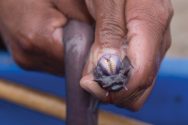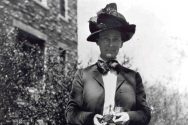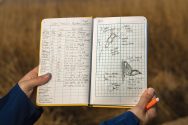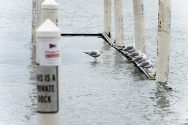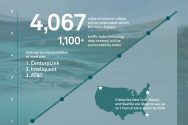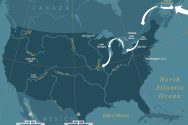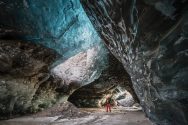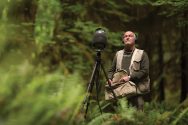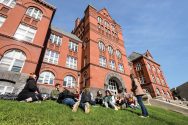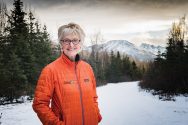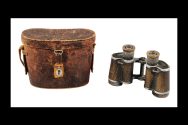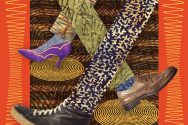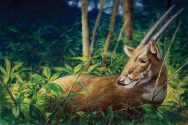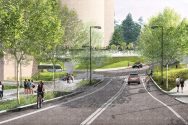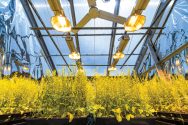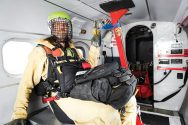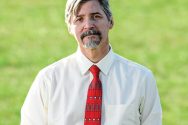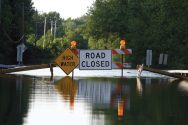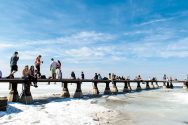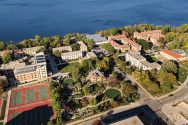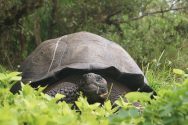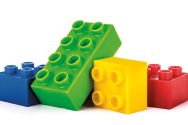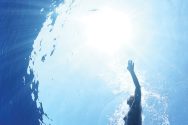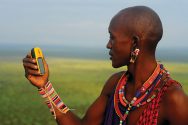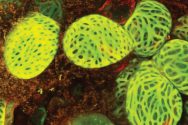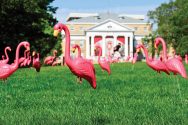Experts use math to better understand a sea creature’s defense mechanism.
Environment
84 stories. Showing page 2 of 3.
Florence Bascom shows off a tool of her trade: a Brunton compass. During her work with the U.S. Geological Survey, she placed benchmarks like the one pictured below, which denoted a site’s exact elevation. Florence Bascom Papers, Smith College
There’s an apocryphal story about what set…
Hamerstrom, one of the UW’s pioneering ecologists, exhibits the tail feathers of a broad-winged hawk in Plainfield, Wisconsin, in 1965. UW Archives Neg. 18146
Frances (Fran — pronounced “Fron”) Hamerstrom MS’40 was a pioneering wildlife ecologist. She and her husband, Frederick, came to the UW to study…
Mason Muerhoff
Nomen est omen, said the ancient Romans, who liked their maxims to rhyme: one’s name is one’s destiny. And while there’s little empirical evidence about this aphorism, put Anna Pidgeon PhD’00 down on the side of support. The professor with the columbiform name has…
Madison-area lake levels continued to rise after a record-breaking storm on August 20, 2018, dumped more than 10 inches of rain on parts of Dane County and caused flooding on the UW–Madison campus lakeshore. Street closures in the downtown area also complicated matters for students who moved into…
How zebra and quagga mussels native to the Caspian Sea came to wreak environmental havoc in the Great Lakes and beyond.
During more than four decades as a photographer, Michael Kienitz ’74 has worked in some of the most beautiful spots in the world — from Peru to the Hindu Kush mountain range near the Afghanistan–Pakistan border. But his camera was always focused on people at the center of armed conflicts,…
Can we have class outside today? Environmental science students enjoy the environment on a spring day in 2017. Science Hall houses the Nelson Institute for Environmental Studies — when it’s not outdoors.
Photo by Jeff Miller…
In Alaska, where glaciers are melting, Fran Ulmer ’69, JD’72 leads a commission tasked with helping U.S. officials decide what to do about climate change.
UW Archives is home to items that belonged to the ecologist who became the most influential conservation thinker of the 20th century.
Spencer Walts
The next renewable energy source could be right underfoot. A group of UW–Madison engineers has developed an inexpensive method to convert footsteps into electricity using wood pulp and nanofibers incorporated into flooring. It marks the latest advance in “roadside energy harvesting” — green…
Bill Robichaud ’83 has devoted his career to saving the saola, a recently discovered mammal that may go extinct before scientists can even study it.
UW–Madison’s campus has long been known for its beauty. Iconic places such as Picnic Point and Bascom Hill bring back memories of campus life for decades of alumni.
But little of that beauty happens by accident. There’s a plan — a master plan.
Campus master plans are required under Wisconsin…
UW–Madison is home to one of the most flexible and unique research facilities in North America.
For former Badger rower Todd Jinkins ’96, parachuting out of a plane with more than 100 pounds of gear on his back to prevent a forest fire is all in a day's work.
The grass may be greener on the other side of the fence. But is that a good thing?
The effects of a warmer Earth will last and last and last.
Students get an early jump on Terrace time in March 2015. Temperatures soared into the sixties, giving Madisonians a chance to get some sun even though Lake Mendota remained frozen.
Photo by Bryce Richter
Shutterstock
Lego wants to turn its iconic bricks green by investing $150 million to find cleaner ways to manufacture them. But the iconic toy company isn’t alone in trying to change the process for the better.
Most of the chemicals used to make plastics, including water bottles,…
Decades after graduation, six alumni defy sharks, aging bodies, and ocean swells in a race across Hawaii’s Maui Channel.
UW researchers weave fabric that can harness solar energy.
Two UW alumni are working closely with African tribal warriors, teaching them how to protect — rather than kill — the majestic lions that roam their lands.
UW’s Great Lakes Bioenergy Research Center researchers identified a method to make paper easier to produce.
The greatest threat to Wisconsin’s forests may not be pollution or urban sprawl.
The Pail and Shovel Party was onto something: if you want to get your message across, take it to Bascom Hill.
Citizen scientists provide clarity for lake researchers’ big questions.
